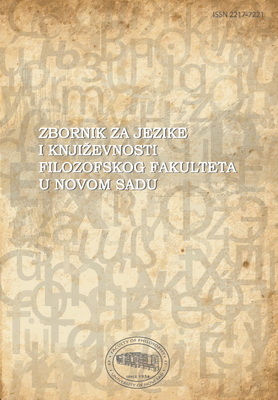THE JOYCEAN EMPTY FORM OF DIFFERENCE
THE JOYCEAN EMPTY FORM OF DIFFERENCE
Author(s): Sonja R. JankovSubject(s): Cognitive linguistics, Film / Cinema / Cinematography
Published by: Филозофски факултет, Универзитет у Новом Саду
Keywords: Joyce; cognitive linguistics; Greenaway; film.
Summary/Abstract: As noted by Sam Slote, from the earliest, Joyce criticism has tended to associate structure and play with meaning. In terms of cognitive laws with which Joyce’s early works negotiate, Leonard Talmy’s four imaging systems provide appropriate methods of approach. Ascribed to structural schematization are notions of interrelation, categories and the effect of constellation which draw symmetry between opening and closing of “Araby.” Related are deployment of perspective (syntactical accent), distribution of attention (localisation of a figure within the background) and force dynamics between the elements on the scene, due to which, through Dubliners, the Portrait and Ulysses, the meaning of a word is described in many different ways. This paper argues for the structure of a word and syntax being described in a number of ways through Finnegans Wake and, accordingly, influencing the perspectives of trajectory and landmark. In Shakespeare, this role is held by Queen Hecuba’s absently-present image in Hamlet and of her letter in Troilus and Cressida, while as the most appropriate analogy to the neologisms of the Wake appear overlapping and enframing of images in Prospero’s Books by Peter Greenaway.
Journal: Zbornik za jezike i književnosti Filozofskog fakulteta u Novom Sadu
- Issue Year: 3/2013
- Issue No: 3
- Page Range: 125-135
- Page Count: 10
- Language: English

